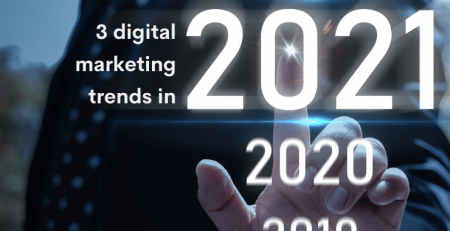Omnichannel fashion retail: consistency, personalisation and language
What makes omnichannel really impressive is a consistent message. Omnichannel fashion retail is no different. Professional communication architecture provides tools for maintaining brand consistency across all platforms, languages and personalised experiences.
Learn how to build style guides that will help you achieve consistent, personalised and fun communication for omnichannel fashion retail.
Omnichannel fundamentals
No matter who you ask, the issue of consistency is always present when talking about the fundamentals of omnichannel.
Launchmetrics lists 5 key elements:
- building pathways between brick-and-mortar and digital experience,
- building personalised customer experience based on data,
- offering luxury experience in digital channels,
- giving customers more ways to buy,
- controlling a company’s brand message.
Let’s focus on the last point:
a mobile app may look very different from the interior of a physical store or the latest banner ad, but some mysterious factor makes all of them instantly recognisable across all channels. That factor is a consistent style. An identity that is expressed through visuals, words and sounds.
As Launchmetrics rightfully states, controlling and maintaining this identity is a tough challenge outside of owned media. This is especially evident in the realm of influencer marketing on social media, where fashion brands in fashion omnichannel retail face significant obstacles.
According to Nielsen Norman Group, successful omnichannel solutions must be:
- optimised for context,
- seamless,
- orchestrated,
- collaborative,
Of the five, language is most helpful when it comes to maintaining consistency.
As we delve deeper into the NNG concept, we can see that consistency gives omnichannel UX four qualities.
Consistency gives omnichannel UX the following qualities:
Language is a significant tool in support of learnability, but let’s focus on the remaining three elements.
Omnichannel, efficiency and language
- Products,
- categories,
- tags,
- and actions
all need consistent names across all touchpoints.
Stay consistent in your style of communications and the voice of your brands in order to dispel your customers’ doubts and prevent confusion.
You can achieve this through communication architecture, following the guidelines and adopting a professional approach to copywriting (as well as to translation and localisation if you’re operating in an international market).
Omnichannel, familiarity and confidence, and language
The above-mentioned approach to language services (e.g. UX writing or marketing communication) will let your customers feel confident. Moving from channel to channel, customers learn what to expect, and meeting those expectations becomes an important task of every omnichannel business. Familiarity is powerful.
Omnichannel, trust and language
Predictable processes that guarantee efficiency and bring reassurance to customers are followed by trust. Trust is more than just familiarity.
On a linguistic level, trust can also be maintained through language correctness and adjusting the tone to every context (just as browsing for inspiration is different from paying for a purchase) but keeping it consistent despite personalisation.
Omnichannel should be personalised and fun to use
According to an article written by McKinsey & Company, “being fun to browse and shop” is one of the two most important elements of customer experience (the other one being personalised product suggestions).
What exactly makes shopping fun?
While the design of the system, numerous physical and visual elements of the UX and the UI are crucial, so is the text layer. All the copy and microcopy in your app and website can add to that fun experience. Making something fun might be a tall order, but it is much easier when you consciously use text and the interaction between text and image.
Reviews drive online trips
A quote from McKinsey & Company:
Shoppers tell us that more practical elements of the experience, such as product reviews to increase confidence in the purchase, being able to reserve items to try on in stores, and the purchase channel meeting expectations consistently, tend to drive their online trips.
This is a compelling case for companies operating on an international and multilingual scale. According to a 2014 study by the Common Sense Advisory, user reviews are the most important content to localise. As Raquel Magalhães put it in her 2019 article, “72% of respondents want reviews in their native language above all else — including 54% of confident and 70% of good English speakers.”
If reviews in a specific language or relevant to a particular market are missing, it is still possible to localise reviews of a given product that were written by shoppers from another market, thus giving new customers some confidence in their purchasing decisions. That is, of course, if you want to improve the digital part of your omnichannel approach.
Maintaining consistency in personalised omnichannel experiences
This seems like an impossible task!
Personalisation is based on customers’ history, age, gender, life circumstances, location, interactions with the brand, and more. It can be expressed through different:
- product suggestions,
- special offers,
- communication channels and contents,
- tone of voice.
If the tone can be adjusted to particular customer groups and, as mentioned before, to various contexts along the way, how do you maintain consistency?
You’d have to ask people who work for the brands that do it, of course. But the best solution – as advocated by some of the best experts out there – would be this: design a system and define your voice.
Nowadays, the companies that excel at this are very high-tech and digital-oriented. Think Slack or MailChimp. It’s only natural, as most of them have very limited contact with their customers outside the digital experience. Words are their primary means of communication.
It’s different for fashion brands.
Fashion communication is very much image-driven. However, with the shift from the brick-and-mortar environment to the digital one and omnichannel fashion, and with the growing importance of maintaining consistency across all touchpoints, the time has come to learn from the best.
The good example of Shopify
I selected a company that is much more retail-oriented, Shopify, and I chose it for two reasons.
The first reason is their mature communication system with a well-defined voice.
The second reason is their serious and professional approach to localisation – a process very closely related with communicating a company’s voice and identity in numerous markets.
Let’s give the floor to Shopify’s Voice and Tone:
Shopify’s voice is a reflection of who we are. We should always sound like Shopify.
At the same time, some aspects of our personality might be more or less apparent, depending on the audience and their context.
Our voice is a reflection of who we are.
Our tone adapts to the context. We’ll use certain voice attributes more or less based on the situation.
This is a selection of just several sentences from the Shopify guidelines, but for the purposes of this article, I believe these excerpts are sufficient. They put in simple words what needs to be defined in the case of omnichannel companies that want to tap into all the benefits of consistency.
Consistent brand messaging in practice
With a well-defined brand voice and clear guidelines for adjusting tone to a variety of situations, you will be ready to establish a consistent communication across all touchpoints and markets (some adjustments may be needed in new language versions due to cultural differences and new contexts).
The following steps will help your omnichannel fashion communication thrive:
1. Define your brand voice. Describe it in simple terms. It is a good practice to use specific values as part of brand voice definition. The voice defines who you are.
2. Decide how your identity (the voice) is expressed in actual messages depending on the context (the tone). If your voice is defined by specific values like honesty, simplicity or being an inspiration, you can perceive setting the tone as using an equalizer. Select a context, then decide to what extent each value is needed in that context. For example, being inspirational may be an important element at most stages, but will your customers appreciate it when providing payment details?
3. Supplement those decisions with clear style guides and a set of simple rules to follow.
With these tools in place, you are ready to make the most of language consistency in omnichannel fashion retail, both domestically and internationally.
To make this work across all touchpoints and markets, make sure the voice, tones and guidelines are brought to the attention of all people involved in your communication process, including:
- copywriters,
- UX writers,
- support employees,
- social media managers,
- ad writers.
Do not forget about those involved in localisation:
- localisation managers,
- translators,
- multilingual copywriters,
- and transcreators.
Don’t tone down your message
There is a common misconception about international communication – apparently, you should rid your content of all culture-specific elements, for example idioms and country-specific jokes. In truth, however, you shouldn’t worry about this if you have a well defined brand, guidelines, a professional localisation pipeline and an appropriate budget.
If you want to follow in the steps of leaders of digital communication, don’t be afraid of market-specific content.
If it fits your brand, use this kind of personalisation with confidence. Go a step further, create culture-, country- or language-specific homepages with relevant content and influencing or inspiring elements.
Even if the content is not easily translatable, transcreators and copywriters can keep your communication on-brand and relevant to your customers. (Learn about our language services for the fashion industry.)
After all, your customers use fashion to express who they are. A personal identity is not something you can easily globalise or deprive of cultural context.
Make the most of omnichannel with consistent communication architecture
The methods described in this article are not something you can work out and implement during a single meeting. It may take months of hard work to get to the point where you can confidently say your communication style and form is well defined across all channels and languages.
But the promises of omnichannel strategy are great, and making everything you can to make the most of it seems well worth the effort.






Leave a Reply